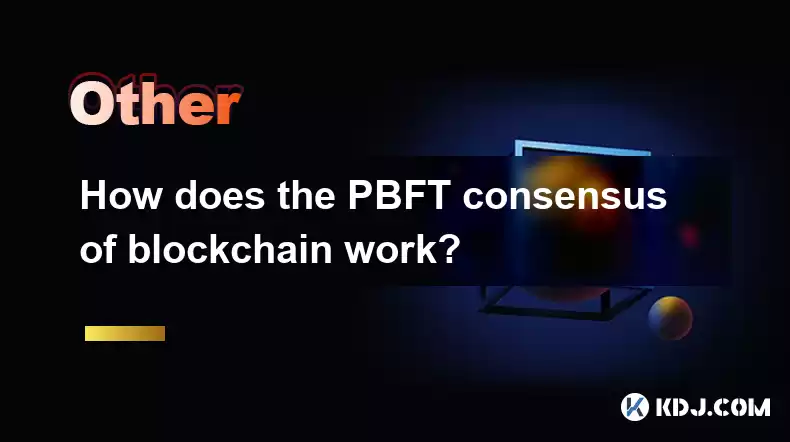-
 Bitcoin
Bitcoin $113900
0.47% -
 Ethereum
Ethereum $3491
-0.42% -
 XRP
XRP $2.876
-1.87% -
 Tether USDt
Tether USDt $1.000
0.03% -
 BNB
BNB $750.4
-0.49% -
 Solana
Solana $161.3
-1.76% -
 USDC
USDC $0.9999
0.01% -
 TRON
TRON $0.3242
-0.91% -
 Dogecoin
Dogecoin $0.1985
-0.19% -
 Cardano
Cardano $0.7241
1.49% -
 Hyperliquid
Hyperliquid $38.05
0.56% -
 Stellar
Stellar $0.3896
2.92% -
 Sui
Sui $3.442
0.61% -
 Chainlink
Chainlink $16.18
0.92% -
 Bitcoin Cash
Bitcoin Cash $541.0
0.51% -
 Hedera
Hedera $0.2427
2.67% -
 Ethena USDe
Ethena USDe $1.001
0.03% -
 Avalanche
Avalanche $21.39
-0.68% -
 Toncoin
Toncoin $3.669
2.25% -
 Litecoin
Litecoin $109.5
0.95% -
 UNUS SED LEO
UNUS SED LEO $8.966
0.11% -
 Shiba Inu
Shiba Inu $0.00001218
0.77% -
 Polkadot
Polkadot $3.598
1.23% -
 Uniswap
Uniswap $9.164
1.14% -
 Monero
Monero $297.7
1.21% -
 Dai
Dai $1.000
0.00% -
 Bitget Token
Bitget Token $4.328
0.84% -
 Pepe
Pepe $0.00001047
1.05% -
 Cronos
Cronos $0.1329
0.70% -
 Aave
Aave $257.6
1.03%
How does the PBFT consensus of blockchain work?
PBFT ensures blockchain security and efficiency through three phases: Pre-prepare, Prepare, and Commit, tolerating up to f faulty nodes in a 3f+1 network.
Apr 14, 2025 at 01:49 am

Introduction to PBFT Consensus in Blockchain
The Practical Byzantine Fault Tolerance (PBFT) consensus mechanism is a crucial component in certain blockchain networks that ensures the system remains operational and secure even when some nodes fail or act maliciously. PBFT was originally designed to handle Byzantine faults, where nodes in a distributed system may fail in unpredictable ways, including behaving maliciously. In the context of blockchain, PBFT helps maintain the integrity and consistency of the distributed ledger. This article delves into the intricacies of how PBFT works within blockchain networks, exploring its phases, advantages, and operational details.
The Three Phases of PBFT
PBFT operates through three main phases: Pre-prepare, Prepare, and Commit. Each phase is essential for reaching consensus among the nodes in the network.
Pre-prepare Phase
In the Pre-prepare phase, the primary node, which is responsible for proposing new blocks, broadcasts a pre-prepare message to all other nodes in the network. This message includes the proposed block and a sequence number to ensure that the nodes process the blocks in the correct order. The pre-prepare message is crucial because it initiates the consensus process and ensures that all nodes start from the same point.
- Broadcast the pre-prepare message: The primary node sends the proposed block along with a sequence number to all other nodes.
- Verify the message: Each node checks the validity of the pre-prepare message, including the sequence number and the block's integrity.
Prepare Phase
Following the Pre-prepare phase, the Prepare phase begins. During this phase, nodes that have received and verified the pre-prepare message broadcast a prepare message to all other nodes. The purpose of this phase is to ensure that a sufficient number of nodes agree on the proposed block.
- Broadcast the prepare message: Nodes that have validated the pre-prepare message send a prepare message to all other nodes.
- Collect prepare messages: Each node collects prepare messages from other nodes until it reaches a threshold (typically 2f+1, where f is the maximum number of faulty nodes the system can tolerate).
Commit Phase
The final phase, Commit, is where nodes finalize the consensus. After collecting enough prepare messages, nodes broadcast a commit message to signify their readiness to commit the proposed block. Once a node receives enough commit messages, it considers the block as finalized and adds it to the blockchain.
- Broadcast the commit message: Nodes that have collected sufficient prepare messages send a commit message to all other nodes.
- Collect commit messages: Each node waits until it receives enough commit messages (again, typically 2f+1).
- Finalize the block: Upon receiving enough commit messages, the node finalizes the block and appends it to the blockchain.
Advantages of PBFT in Blockchain
PBFT offers several advantages that make it a suitable consensus mechanism for certain blockchain applications.
- High Throughput: Compared to other consensus mechanisms like Proof of Work (PoW), PBFT can achieve higher transaction throughput because it does not require resource-intensive mining processes.
- Finality: Once a block is committed through PBFT, it is considered final, reducing the risk of forks and ensuring a more stable ledger.
- Energy Efficiency: PBFT is more energy-efficient than PoW, as it does not rely on computational power to secure the network.
Operational Details of PBFT
To implement PBFT in a blockchain network, several operational details need to be considered. These include node selection, message validation, and handling of faulty nodes.
- Node Selection: The primary node is typically selected in a round-robin fashion or through a voting mechanism to ensure fairness and prevent a single node from dominating the consensus process.
- Message Validation: Each node must validate incoming messages to ensure their integrity and authenticity. This involves checking digital signatures and sequence numbers.
- Handling Faulty Nodes: PBFT can tolerate up to f faulty nodes in a network of 3f+1 nodes. If a node detects a faulty message, it can initiate a view change to select a new primary node.
Practical Implementation of PBFT in Blockchain
Implementing PBFT in a blockchain network involves several practical steps. Here is a detailed guide on how to set up and run a PBFT-based blockchain system.
- Setup the Network: Establish a network of nodes, ensuring that there are at least 3f+1 nodes to tolerate f faulty nodes.
- Configure Node Roles: Assign roles to nodes, including a primary node that will initially propose blocks.
- Implement Message Handling: Develop the logic for handling pre-prepare, prepare, and commit messages, ensuring that nodes can validate and respond to these messages correctly.
- Implement View Change: Create a mechanism for initiating and completing a view change when a node suspects the primary node is faulty.
- Testing and Validation: Thoroughly test the system to ensure that it can handle various scenarios, including node failures and network partitions.
Frequently Asked Questions
Q: How does PBFT handle network partitions?
A: PBFT can handle network partitions by using a view change mechanism. If a node detects that the primary node is unreachable or behaving maliciously, it can initiate a view change to select a new primary node. This process ensures that the network can continue to function even if some nodes are isolated due to network issues.
Q: Can PBFT be used in public blockchains?
A: While PBFT is more commonly used in permissioned or private blockchains due to its requirement for a known set of nodes, it can be adapted for public blockchains with modifications. However, its scalability limitations make it less suitable for large-scale public networks compared to other consensus mechanisms like Proof of Stake (PoS).
Q: What are the scalability limitations of PBFT?
A: PBFT's scalability is limited by the number of nodes in the network. As the number of nodes increases, the communication overhead also increases, making it less efficient for large networks. Additionally, the requirement for all nodes to communicate with each other can lead to performance bottlenecks.
Q: How does PBFT ensure the security of the blockchain?
A: PBFT ensures the security of the blockchain by requiring a supermajority (2f+1 out of 3f+1 nodes) to agree on each block. This makes it difficult for malicious nodes to compromise the network, as they would need to control more than one-third of the nodes to disrupt consensus. Additionally, the use of digital signatures and message validation helps prevent tampering and ensures the integrity of the consensus process.
Disclaimer:info@kdj.com
The information provided is not trading advice. kdj.com does not assume any responsibility for any investments made based on the information provided in this article. Cryptocurrencies are highly volatile and it is highly recommended that you invest with caution after thorough research!
If you believe that the content used on this website infringes your copyright, please contact us immediately (info@kdj.com) and we will delete it promptly.
- Altcoins Most Searched: Hedera (HBAR) and the ETF Hype
- 2025-08-03 20:50:16
- Arbitrage Adventures: Creditcoin, Kaspa, and Chasing Crypto Profits
- 2025-08-03 20:30:16
- Claude HIVE & Code Agents: Faster Coding Revolution?
- 2025-08-03 20:50:16
- Trump Media, Bitcoin, and Crypto: A Surprising Alliance in the Making?
- 2025-08-03 21:30:16
- Shiba Inu's Bullish Reversal Hopes Amid Market Uncertainty: A Deep Dive
- 2025-08-03 21:30:16
- Shiba Inu's Struggle, Mutuum Finance's Rise, and Key Support Levels: A Crypto Deep Dive
- 2025-08-03 20:55:16
Related knowledge

What is the difference between on-chain and off-chain transactions?
Aug 02,2025 at 04:22pm
Understanding On-Chain TransactionsOn-chain transactions refer to digital asset transfers that are recorded directly on a blockchain ledger. These tra...

What is a node's role in a blockchain network?
Aug 03,2025 at 03:16pm
Understanding the Function of a Node in a Blockchain NetworkA node is a fundamental component of any blockchain network, acting as a participant that ...

What is the double-spending problem and how does blockchain prevent it?
Aug 02,2025 at 01:07pm
Understanding the Double-Spending ProblemThe double-spending problem is a fundamental challenge in digital currency systems where the same digital tok...

What is the difference between a blockchain and a database?
Aug 01,2025 at 09:36pm
Understanding the Core Structure of a BlockchainA blockchain is a decentralized digital ledger that records data in a series of immutable blocks linke...

How does blockchain handle scalability?
Aug 02,2025 at 02:58pm
Understanding Blockchain Scalability ChallengesBlockchain scalability refers to a network's ability to handle an increasing volume of transactions wit...

What is the role of cryptography in blockchain?
Aug 03,2025 at 03:42pm
Understanding the Foundation of Blockchain SecurityCryptography is the cornerstone of blockchain technology, providing the essential tools to ensure d...

What is the difference between on-chain and off-chain transactions?
Aug 02,2025 at 04:22pm
Understanding On-Chain TransactionsOn-chain transactions refer to digital asset transfers that are recorded directly on a blockchain ledger. These tra...

What is a node's role in a blockchain network?
Aug 03,2025 at 03:16pm
Understanding the Function of a Node in a Blockchain NetworkA node is a fundamental component of any blockchain network, acting as a participant that ...

What is the double-spending problem and how does blockchain prevent it?
Aug 02,2025 at 01:07pm
Understanding the Double-Spending ProblemThe double-spending problem is a fundamental challenge in digital currency systems where the same digital tok...

What is the difference between a blockchain and a database?
Aug 01,2025 at 09:36pm
Understanding the Core Structure of a BlockchainA blockchain is a decentralized digital ledger that records data in a series of immutable blocks linke...

How does blockchain handle scalability?
Aug 02,2025 at 02:58pm
Understanding Blockchain Scalability ChallengesBlockchain scalability refers to a network's ability to handle an increasing volume of transactions wit...

What is the role of cryptography in blockchain?
Aug 03,2025 at 03:42pm
Understanding the Foundation of Blockchain SecurityCryptography is the cornerstone of blockchain technology, providing the essential tools to ensure d...
See all articles

























































































